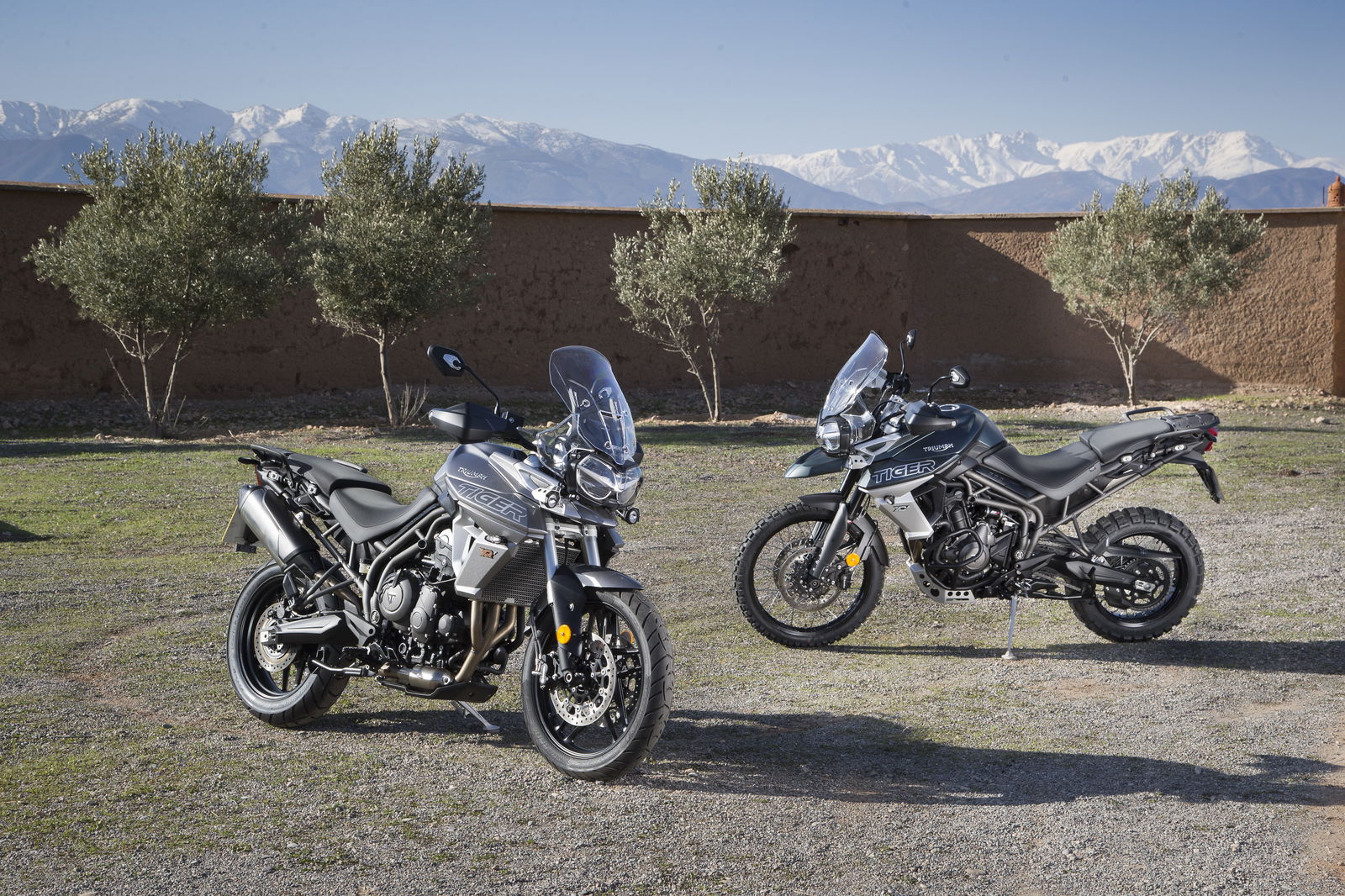First ride: Triumph Speed Triple RS review
Triumph’s Speed Triple gets a bit more brutish without loosing any of its class

'THE Greatest Speed Triple Ever Made,’ is Triumph’s bold headline marketing claim of its updated flagship naked bike.
You’d hope so, really, wouldn’t you? The alternative – Not The Best Speed Triple We’ve Ever Made – would not entice to ownership of the latest version.
So is it a vacuous statement, masking a meagre round of updates to the long-standing model? Or simply a statement of fact?
I’ve just been to the press launch ride in Almeria, Spain, to find out...

Engine
Actually, it is a fairly significant round of upgrades that the Speed Triple has received, including lean-angle optimised ABS and traction control if you go for the fancy RS edition, the only one provided for test by Triumph.
But don’t be distracted by the rider aids, nor the new colour dash, which is on both the RS and base-model S edition. The most important update is to the 1050cc triple engine, which has been tweaked for more power and torque.
It makes 150hp instead of 140hp, and at 10,500rpm instead of 9,500rpm. The red line is also higher, at 11,000 instead of 10,000.
Seven per cent more power might not sound world-changing, but with the extra revs, it unleashes a whole new, more eager character in the top end of the range. It makes the Speed Triple feel more of a fully-fledged super-naked. I was never quite sure if it qualified before, in a class where 160hp is more typical.
But it retains the manageable character that probably set it apart from some of its competitors, with its less aggressive throttle response.
The build of power through the range is as near perfectly linear as must be possible. The spread of torque means that from 5,000rpm up there's never any pressing need to change down for more drive. But if you want to, the RS’s optional quick-shifter will make it easy. It works both ways – up and down – really smoothly.
Peak torque is up a claimed 4% to 86.2lbft, and it makes more power and torque throughout the range according to Triumph.
The Speed Triple comes with three pre-set riding modes - Rain, Road and Sport – plus an additional Track mode, with circuit-optimised ABS and traction control, if you go for the RS version. Rain reduces power to 100hp. There’s also a customisable mode, where you select your own combination of ABS, traction control and throttle map settings.
Both versions of the Speed Triple allow you to switch ABS and traction control off altogether.
The initial throttle response is less jerky than I’ve come to expect from new high-performance motorcycles, meeting the rigid demands on fuelling of latest emission limits. It still feels a bit on/off at times in Sport or Track mode (which are the same in terms of throttle response) but not so it’s difficult to get on with.

Handling
At 189kg dry, the RS version is a claimed 3kg lighter than the high-spec edition it replaces, the Speed Triple R. The base model, called the Speed Triple S, weighs the same as before, at a claimed 192kg dry.
The chassis is the same twin-spar aluminium design but weight savings have been made in the detail, including the RS’s new titanium Arrow silencers with carbon-fibre end caps.
It’s a bike that changes direction with little requirement for conscious thought or physical effort, and one you could throw about all without getting tired.
The high bars sweep gently toward you for a natural riding position and I didn’t think about the seat all day, which must mean comfort. The RS comes with a more padded ‘comfort’ seat for the rider as standard.
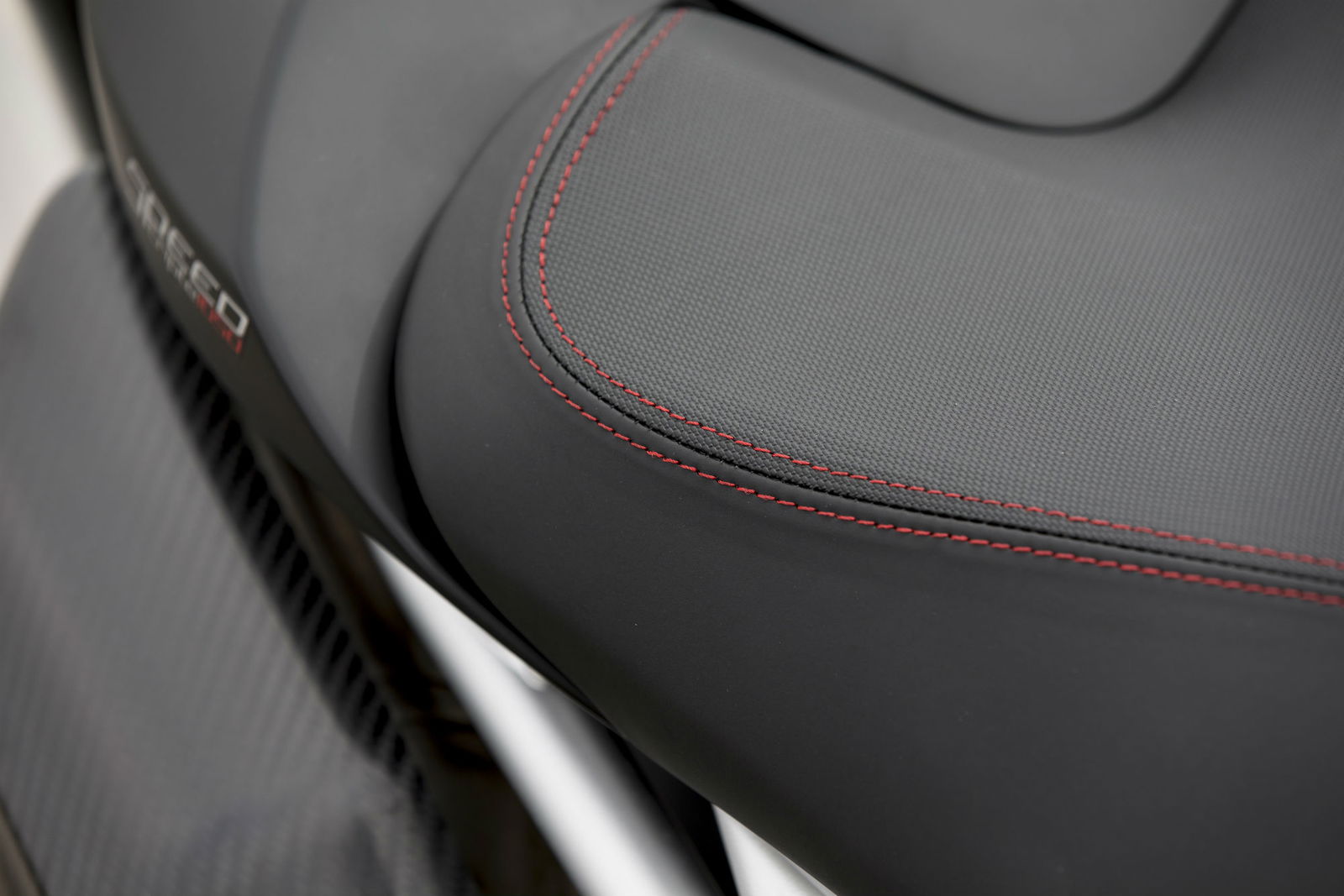
A new inertial measurement unit monitoring chassis orientation in the RS version means you get that lean-angle optimised traction control and cornering ABS. On the road, together with the grippy Pirelli Diablo Supercora SP tyres, this provides loads of confidence for braking late and getting on the power early in corners.
What a shame there wasn’t a better chance to test it on track. A session at Almeria was greeted with rain from the moment it started, so the rear started slipping under even modest drive and lean out of corners.

The suspension is unchanged, so you get full adjustability at both ends but the S has Showa components while the RS has higher-spec Öhlins bits.
The brakes are also basically the same, with Brembo four-piston radial monobloc calipers at the front and a two-piston Nissin at the back, although Triumph says the rear pad is different, with better bite. You could have swapped that yourself, couldn’t you?
The power of the front is impressive. Usefully, you can adjust not only the span between bar and lever but also the ratio of bite to pressure applied.
Equipment
Both versions get that new TFT colour dash, which changes lay-out according to riding mode. In Sport, for example, the rev counter arcs across the width of the display, while in Road or Rain it moves to the right-hand side, giving more prominence to speedometer. You can have dark digits on a light background or vice versa. And as the RS model has an extra rider mode (Track), it gets an extra lay-out.
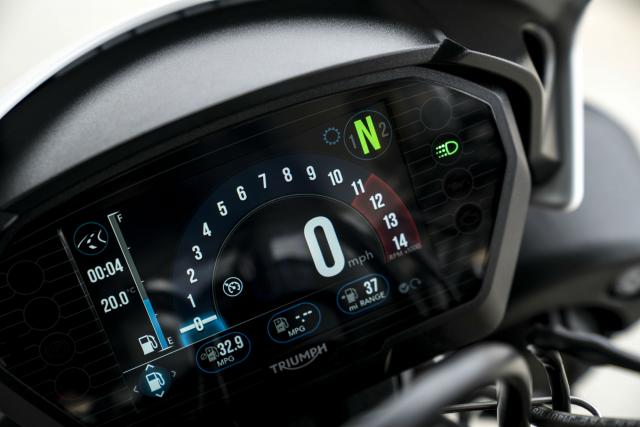
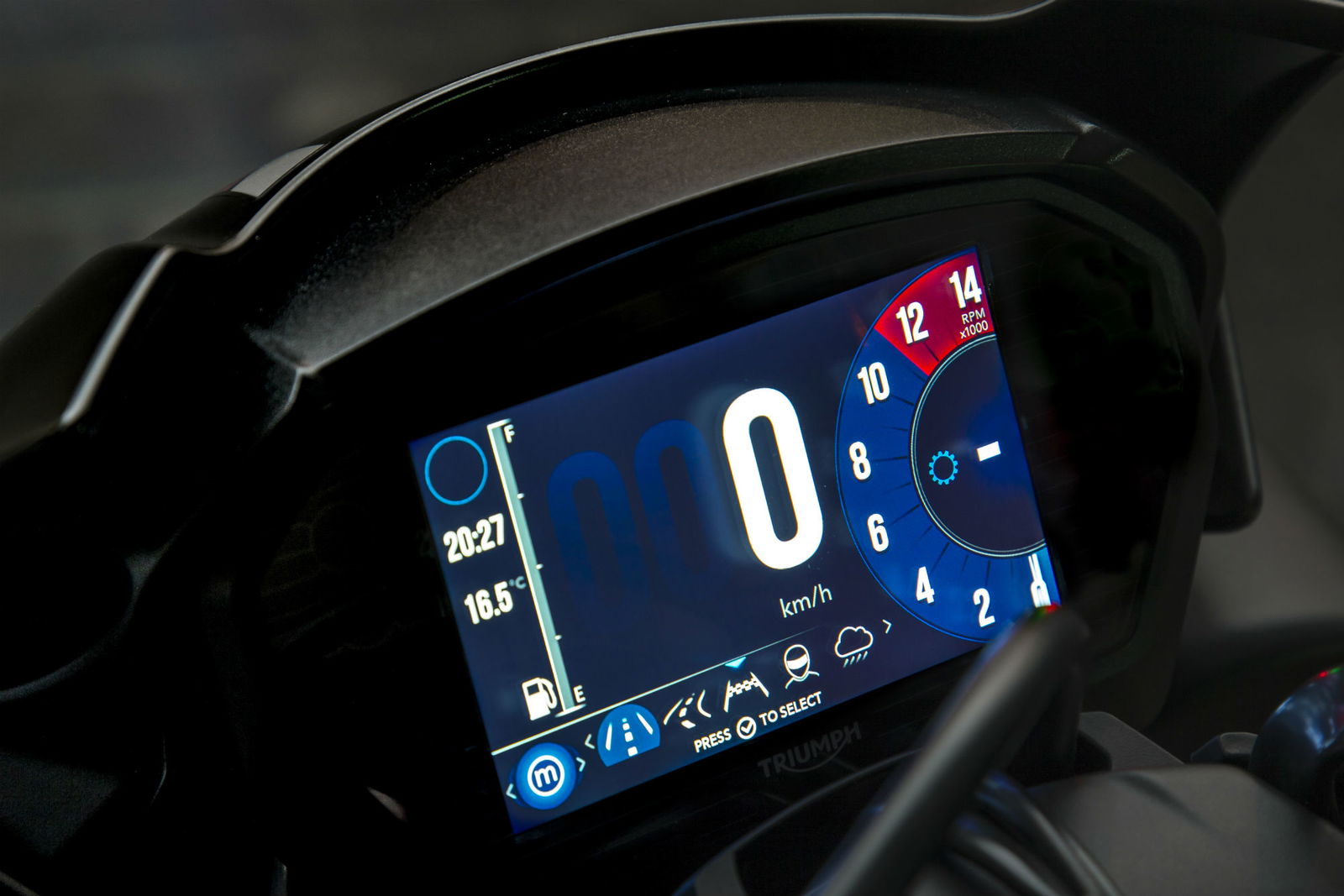
The switches on the handlebars are now backlit. I’ve often thought, while trying to locate a high beam switch on an unlit road, how useful this would be. As the launch ride was entirely in daylight, there wasn’t an opportunity to validate the theory.

Also new is cruise control as standard, letting you set a speed and then adjust it up or down a fraction as desired. I made use of this on the motorway ride back to the hotel in soaked through leathers, along with the heated grips, which are an option.
And with the RS you get a keyless ignition, which means you press a button to start the bike, another to stop it and a third to engage the steering lock, all without taking the keyless fob out of your pocket.
We like
Triumph says this is the best-sounding Speed Triple ever. I don’t about that, but they are not wrong about it sounding good. The RS’s Arrow silencers make an old-fashioned throaty bark as the revs rise.
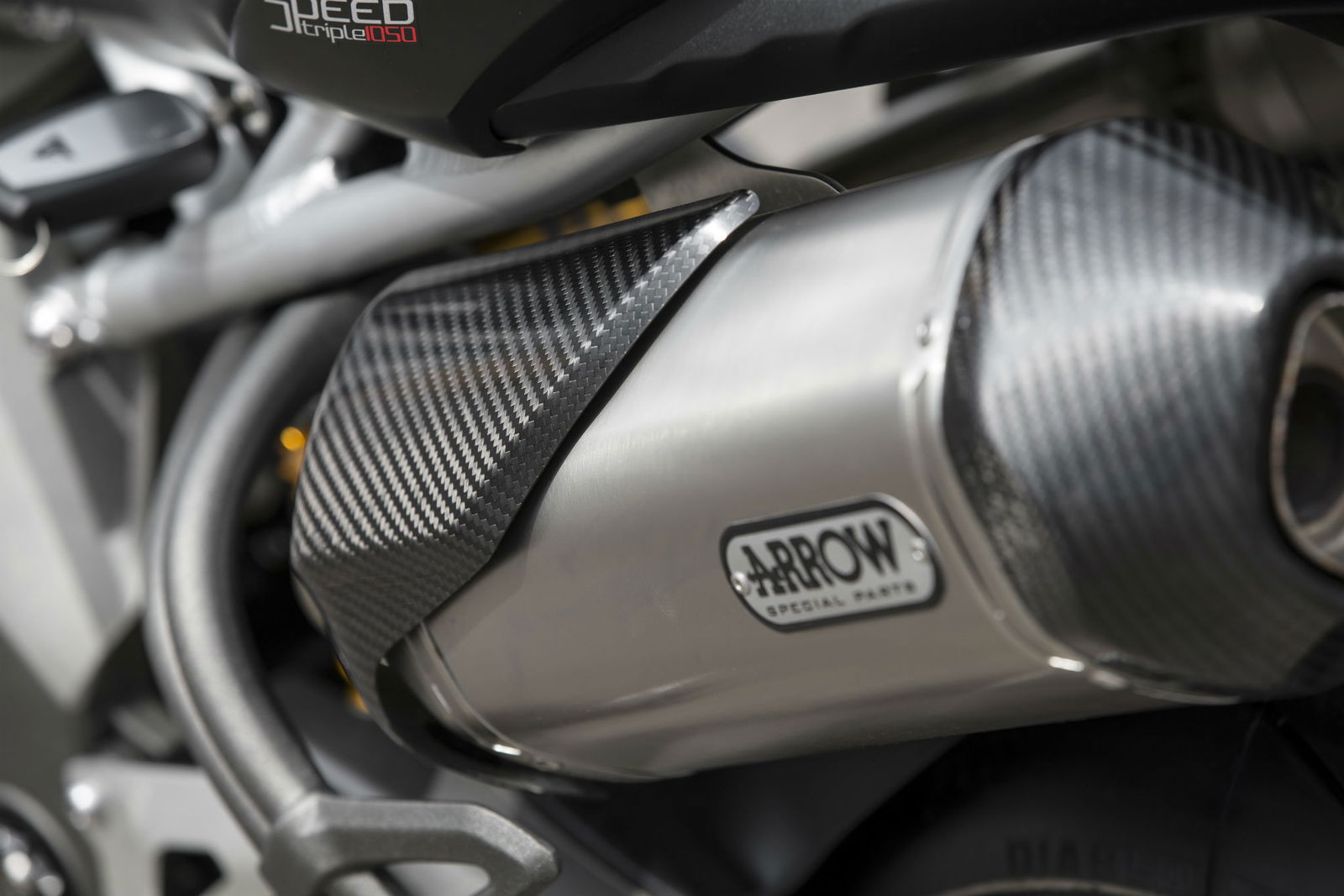
We don’t like
The new Speed Triple has a higher quality finish, says Triumph, with new high-gloss cast alloy wheels, restyled silencers on the S and carbon bits on the RS. I can’t help thinking – and I’m sure from Facebook comments that some of you do, too – that it’s a bit meh. A bit samey. If it’s the greatest Speed Triple ever, it shouldn’t look just like the last one.
Pictures: Kingdom Creative
Verdict
The old Speed Triple felt like a bit more of an all-rounder than other super-nakeds, a bit less single-purpose brute. Still really powerful, at 140hp, but with a throttle you could open in a wider range of settings.
The updated engine’s extra power and revs take it closer to its 160hp contemporaries, like Yamaha’s MT-10, but it still seems to have a mid-range you can use more of, more often. With its sophisticated new rider aids and that slick optional quick-shifter, it’s devastatingly effective but a little more subtle.
Think of it as James Bond to their Jason Statham (yeah, I know one’s real and the other isn’t).
The best Speed Triple ever made? Probably.
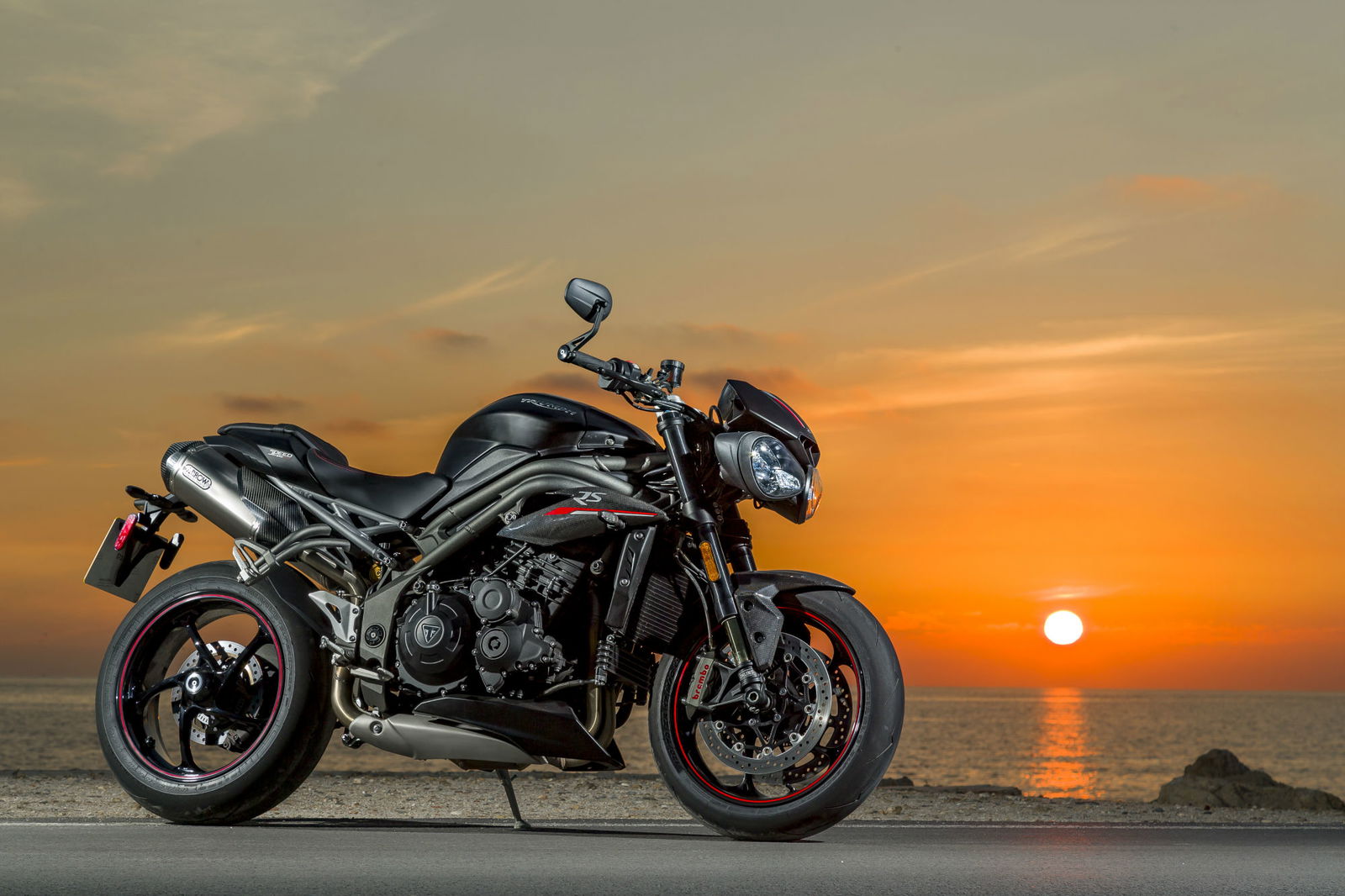
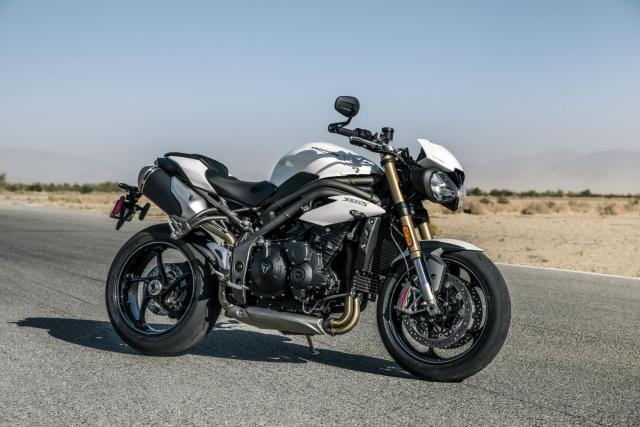
Specifications
Price | SPEED TRIPLE S £11,350 in black or £11,475 in white | SPEED TRIPLE RS £13,250 in black or white colour options |
Engine Type | Liquid-cooled, 12 valve, DOHC, in-line 3-cylinder | Liquid-cooled, 12 valve, DOHC, in-line 3-cylinder |
Capacity | 1050 cc | 1050 cc |
Bore/Stroke | 79 x 71.4 mm | 79 x 71.4 mm |
Compression Ratio | 12.92:1 | 12.92:1 |
Maximum Power | 150 PS / 148 Bhp (110 kW) @ 10,500 rpm | 150 PS / 148 Bhp (110 kW) @ 10,500 rpm |
Maximum Torque | 117 Nm @ 7,150 rpm | 117 Nm @ 7,150 rpm |
Fuel system | Multipoint sequential electronic fuel injection with SAI | Multipoint sequential electronic fuel injection with SAI |
Exhaust | Stainless steel 3 into 1 into 2, twin high level stainless steel silencers | Stainless steel 3 into 1 into 2, twin high level stainless steel silencers |
Final drive | X ring chain | X ring chain |
Clutch | Wet, multi-plate slip assist cltuch | Wet, multi-plate slip assist cltuch |
Gearbox | 6-speed | 6-speed |
Frame | Aluminium twin-spar | Aluminium twin-spar |
Swingarm | Single-sided, aluminium alloy with eccentric chain adjuster | Single-sided, aluminium alloy with eccentric chain adjuster |
Front Wheel | Cast aluminium alloy multi-spoke 17 x 3.5 in | Cast aluminium alloy multi-spoke 17 x 3.5 in |
Rear Wheel | Cast aluminium alloy multi-spoke 17 x 6.0 in | Cast aluminium alloy multi-spoke 17 x 6.0 in |
Front Tyre | 120/70 ZR17 | 120/70 ZR17 |
Rear Tyre | 190/55 ZR17 | 190/55 ZR17 |
Front Suspension | Showa 43 mm upside-down forks with adjustable preload, rebound and compression damping. 120 mm travel | Öhlins 43 mm NIX30 upside-down forks with adjustable preload, rebound and compression damping. 120 mm travel |
Rear Suspension | Showa Monoshock with preload, rebound and compression damping, 130 mm rear wheel travel | Öhlins TTX36 twin tube Monoshock with preload, rebound and compression damping, 130 mm rear wheel travel |
Front Brake | Twin 320 mm floating discs, Brembo 4-piston 2-pad radial monobloc calipers. Switchable ABS. | Twin 320 mm floating discs, Brembo 4-piston, 2-pad monobloc radial calipers. Switchable ABS |
Rear Brake | Single 255 mm disc, Nissin single 2-piston sliding caliper. Switchable ABS. | Single 255 mm disc, Nissin single 2-piston sliding caliper. Switchable ABS |
Length | 2,075 mm | 2,075 mm |
Width (Handlebars) | 775 mm | 775 mm |
Height Without Mirrors | 1,070 mm | 1,070 mm |
Seat Height | 825 mm | 825 mm |
Wheelbase | 1,445 mm | 1,445 mm |
Rake | 22.9 º | 22.9 º |
Trail | 91.3 mm | 91.3 mm |
Dry Weight | 192 Kg | 189 Kg |
Fuel Tank Capacity | 15.5 L | 15.5 L |
Fuel Consumption | 5.2 l/100km (54.3 MPG) | 5.2 l/100km (54.3 MPG) |
CO2 Emissions | 119.0 g/km | 119.0 g/km ' |
.JPG?width=1600)
